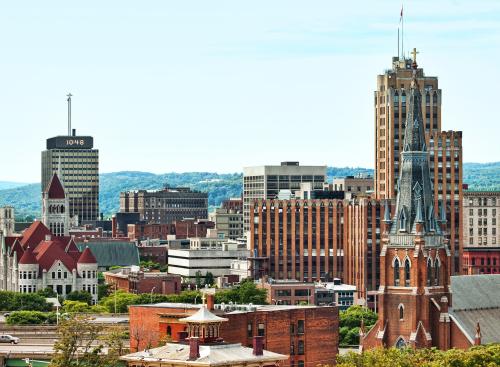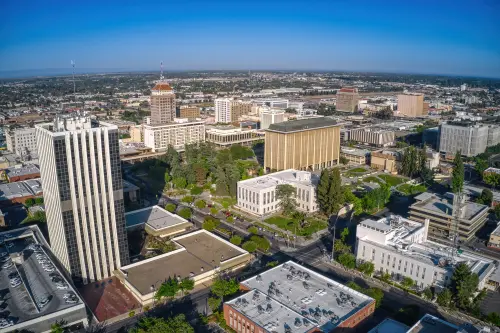Despite record profits, these are tough times for Big Tech. In 2017, the industry and society each began to realize the full ambiguity of tech’s transformations of the wider world.
To be sure, many of the era’s disconcerting tech-related mega-trends have tangled origins and predate the current “digitalization of everything” quantified in our recent report. Yet as tech columnist Farhad Manjoo has noted, the rise of the giant tech platforms has now been linked to a long list of troubling developments (along with the creation of much value).
These developments range from such online concerns as fake news, online echo chambers, and addictive product design to broader analog challenges such as the rise of inequality, the hollowing out of the job distribution, and the spread of the gig economy and automation. And no longer is tech’s influence minimized. No one is saying anymore that tech’s role in such trends is a “pretty crazy idea” as Facebook CEO Mark Zuckerberg initially did when asked about his site’s role in tainting the 2016 election. Instead, the talk is moving toward big questions like anti-trust policy and concrete solutions, whether it be greater transparency about online ad purchasers or a vastly expanded earned income tax credit.
Yet the discussion needs to widen even more. While we’re engaging in a new assessment of technology’s transformative impacts, no one should leave aside tech’s most physically enormous influence: its big role in reshaping the nation’s urban geography. Scholars have for years suggested that tech might alter the city hierarchy. Most notably, Beaudry, Doms, and Lewis showed more than a decade ago that the cities that adopted personal computers earliest and fastest saw their relative wages increase the quickest. Yet, there is now strong evidence (including our own work) that digital technologies are contributing heavily to the divergence of metro economies and the pull away of “superstar” cities from smaller ones and the rural hinterland, with painful implications.
Last year, Elise Giannone demonstrated that the divergence of cities’ wages since 1980—after decades of convergence—reflects a mix of technology’s increased rewards to highly skilled tech workers and local industry clustering. Likewise, our November report on digitalization shows that while cities’ mean digital scores are converging as less-digitally saturated metros adopt the digital basics and catch up with the leaders, the superstars are pulling away from the pack when it comes to high-level skills. Here’s what that looks like:

While in the above figure’s left panel the line slopes downward, showing that lower-scoring digital metros saw faster increases in their median scores over the years 2002 to 2016 than the leaders, in the right panel the line slopes upward because metros with the highest shares of highly digital workers saw their shares of such workers pull away from those elsewhere.
Or to look at it a different way, the distribution across the map of big, coastal dark-blue bubbles standing for the major metropolitan areas—Boston, New York, Washington, Houston, Austin, Los Angeles, the Bay Area, Seattle—shows that highly-digital workers have been congregating for years:

In short, it may be inherent in tech that the digital rich get richer, suggesting that this must be a gargantuan concern in coming discussions of tech’s responsibility to the offline world. Quite simply, the nation’s ongoing tech revolution, for all of its benefits, is likely implicated in the nation’s rising geographical imbalances and urban-rural divides.
What does it mean, though, to talk about tech’s responsibility for some of the unanticipated consequences of its products on the city hierarchy? In many respects that’s a tough question, given the sheer scale of tech’s unanticipated but real impacts. How would one even calculate the costs and benefits of regional divergence, and devise a way to reduce the polarizing effects of tech without diminishing their power for good? No, none of that seems possible or right.
With that said, however, factoring in responsibility—and acting constructively on it—seems eminently possible, both for the tech industry and the public sector.
To their credit, key technology leaders and companies have moved significantly closer to acknowledging the spatial problems associated with their products beginning to mitigate them. Since Zuckerberg’s “pretty crazy idea” comment, the Facebook CEO embarked on his widely mocked but quite admirable “listening” tour around America, while Microsoft, Apple, and Google have all launched initiatives focused on enhancing their ties to Main Street America. In August, Apple CEO Tim Cook came very close to explicitly acknowledging the geographical impacts of digital technologies when he said he believed Apple had a “moral responsibility” to “help grow the economy…to contribute to this country.”
And AOL co-founder and D.C.-based investor Steve Case has been a leader in understanding the spatial imbalances of the tech economy. Most recently he launched a $150 million Rise of the Rest seed fund for start-ups in the Midwest and other often-overlooked areas. Next will ideally come more explicit acknowledgement that disruptive spatial effects likely occur in tandem with digital technology, though that will be hard. But in any event, the first needed step toward problem-solving is acknowledgment, to allow for a richer national discussion. Perhaps that will lead to troubleshooting that might well entail organized investments and skill-building by Big Tech in left-behind regions.
As to the public-sector discourse, it is actually less developed than the industry one. As Amy Liu and one of this blog’s authors recently noted, the nation possesses at present no strategy—let alone serious policies—for addressing the spatial unevenness inherent in tech. No doubt, a public agenda that pushes back against the geographic tendencies of tech is a tall order. Nationwide economic development programs that work well in places left behind are few and far between. Still, as the evidence of tech’s influence on the nation’s urban patterns accumulates, it seems bizarre to think that a great nation would leave its long-term development trajectory entirely to the business dynamics of the tech sector.
Rather, government and society should push back against tech’s spatial default pattern and insist on pushing back against negative outcomes. In our recent piece, we suggest dozens of potential policy initiatives, but their specifics are not the point. What really matters now is for Big Tech, society, and the public sector each to realize the link of tech to geographical (as well as labor market) disparities—and begin thinking about what to do about it.
The Brookings Institution is committed to quality, independence, and impact.
We are supported by a diverse array of funders. In line with our values and policies, each Brookings publication represents the sole views of its author(s).








Commentary
Online giants must accept responsibility for impacts on the physical world
January 8, 2018